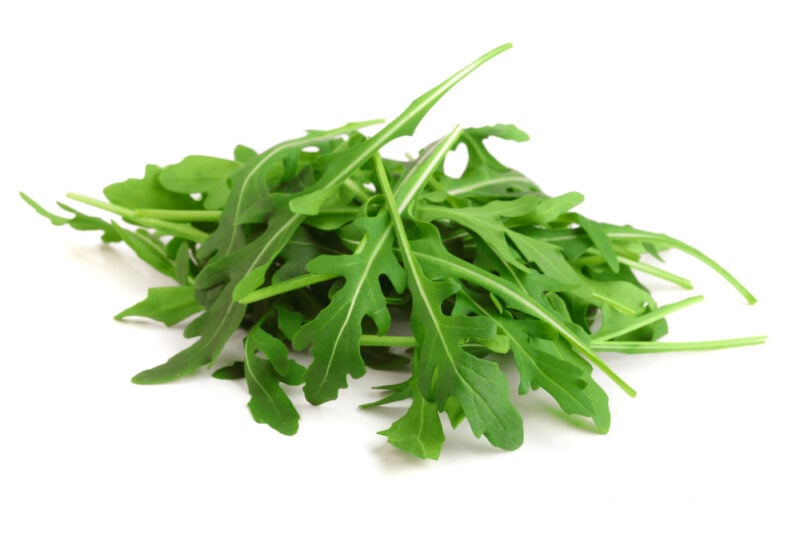Lettuce is a leafy green vegetable that is often eaten raw in salads, but it can also be cooked. There are many different types of lettuce, each with its own unique flavor and texture. In this blog post, we will explore some of the most popular types of lettuce and how to use them in your cooking.
Want to Save this Recipe?
Enter your email below & we’ll send it straight to your inbox. Plus you’ll get great new recipes from us every week!
What Is Lettuce?
Lettuce (Lactuca sativa) is an annual plant of the daisy family Asteraceae. It is most often grown as a leaf vegetable, but sometimes for its stem and seeds. Lettuce is most often used for salads, although it is also seen in other kinds of food, such as soups, sandwiches and wraps; it can also be grilled.
Lettuce is native to the Mediterranean region and Siberia, but has been cultivated worldwide for centuries. It is a cool-season crop that is typically grown in the spring and fall. Lettuce plants have a relatively short growing period, typically 60-80 days.
Types of Lettuce
Lettuce is a leafy green vegetable that is commonly used in salads. It is a good source of vitamins A and C, as well as dietary fiber. There are many different types of lettuce, each with its own unique flavor and texture.
Loose-leaf lettuce is a type of lettuce that grows in a loose rosette of leaves. It has a mild flavor and a delicate texture, making it a good choice for salads and sandwiches. Loose-leaf lettuce can also be grilled or stir-fried. Some popular varieties of loose-leaf lettuce include the following.

Green leaf lettuce: This type of lettuce has bright green leaves with a slightly crinkled texture. It has a mild flavor and is a good all-purpose lettuce.

Red leaf lettuce: This type of lettuce has deep red leaves with a slightly sweet flavor. It is often used in salads for its color and flavor.

Oakleaf lettuce: This type of lettuce has lobed leaves that resemble oak leaves. It has a mild flavor and a slightly crunchy texture.

Butter lettuce: This type of lettuce has soft, buttery leaves with a mild flavor. It is often used in salads and sandwiches. Try our Chorizo Lettuce Wraps!

Crisphead lettuce is a type of lettuce that grows in a tight head of leaves. It has a crisp texture and a neutral flavor, making it a good choice for salads and sandwiches. Crisphead lettuce can also be used in wraps and burgers. Some popular varieties of crisphead lettuce include the following.

Iceberg lettuce: This is the most common type of crisphead lettuce. It has pale green leaves and a very mild flavor. Try our Meatball Lettuce Wraps!

Romaine lettuce: This type of lettuce has dark green leaves and a slightly sweet flavor. It is often used in Caesar salads and wraps. Try these Vietnamese Beef Lettuce Wrapsbut!

Butterhead lettuce is a type of lettuce that grows in a loose head of soft, buttery leaves. It has a mild flavor and a delicate texture, making it a good choice for salads and sandwiches.

Bibb lettuce: This type of lettuce has small, delicate heads of light green leaves. It has a mild, sweet flavor and is often used in salads and sandwiches. Try these Shrimp Lettuce Wraps!

Boston lettuce: This type of lettuce has larger heads of dark green leaves than Bibb lettuce. It has a slightly stronger flavor and is a good all-purpose butterhead lettuce.

Specialty lettuces are a type of lettuce that is grown for its unique flavor or texture. Some popular varieties of specialty lettuces include the following.
Arugula: This type of lettuce has dark green, peppery leaves. It is often used in salads and sandwiches for its unique flavor.

Radicchio: This type of lettuce has deep red leaves with a slightly bitter flavor. It is often used in salads and grilled dishes for its color and flavor.

Escarole: This type of lettuce has curly, pale green leaves with a slightly bitter flavor. It is often used in salads and soups for its texture and flavor.

How to Use Different Types of Lettuce
When choosing a type of lettuce for a particular dish, it is important to consider the flavor and texture of the lettuce. For example, if you are making a salad with a strong dressing, you may want to choose a lettuce with a mild flavor, such as iceberg or romaine lettuce. If you are making a sandwich, you may want to choose a lettuce with a more assertive flavor, such as arugula or radicchio.
You can also use different types of lettuce to create different textures in your dishes. For example, if you are making a Caesar salad, you may want to use both romaine lettuce and croutons to create a mix of textures. If you are making a wrap, you may want to use a combination of iceberg lettuce and spinach to create a wrap that is both sturdy and flavorful. Try our BLT Chicken Lettuce Wraps!
No matter what type of lettuce you choose, be sure to wash it thoroughly before eating it. To wash lettuce, simply remove the outer leaves and rinse the inner leaves under cold water. You can also use a salad spinner to dry the lettuce.
How Should You Prep and Store Lettuce?
Lettuce is a versatile and healthy vegetable that can be enjoyed in many different dishes. It is also a relatively inexpensive food item, making it a popular choice for budget-minded shoppers. However, lettuce can also be perishable, so it is important to know how to prep and store it properly in order to maximize its shelf life and quality.
Prepping Lettuce
Before storing lettuce, it is important to wash it thoroughly. This will help to remove any dirt, bacteria, or pesticides that may be present on the leaves. You can wash lettuce by hand or in a salad spinner. If washing by hand, simply fill a bowl with cold water and add the lettuce leaves. Swish the leaves around in the water to remove any dirt or debris. Then, drain the water and repeat the process with fresh water. If using a salad spinner, simply add the lettuce leaves to the spinner and spin to dry.
Once the lettuce is washed, you can dry it with a paper towel or salad spinner. It is important to remove as much excess moisture as possible, as moisture can contribute to spoilage.
If you are not planning to use the lettuce immediately, you can prep it for later by chopping or tearing it into bite-sized pieces. This will make it easier to use in salads or other recipes when you are ready.
Storing Lettuce
The best way to store lettuce is in the crisper drawer of your refrigerator. The crisper drawer is designed to maintain high humidity, which will help to keep lettuce crisp and fresh.
To store lettuce in the crisper drawer, simply place the washed and dried lettuce leaves in a container or bag. If you are storing whole heads of lettuce, you can wrap them in a paper towel to help absorb any excess moisture.
Lettuce can be stored in the crisper drawer for up to 10 days, depending on the type of lettuce. Leafy lettuces, such as spinach and kale, will typically last longer than head lettuces, such as iceberg and romaine.
Here are some additional tips for storing lettuce:
Keep lettuce away from fruits and vegetables that produce ethylene gas, such as apples, bananas, and melons. Ethylene gas can cause lettuce to ripen and spoil more quickly.
If you are storing chopped or torn lettuce, be sure to place it in a container with a tight-fitting lid. This will help to prevent the lettuce from drying out.
If you notice that your lettuce is starting to wilt or brown, you can try refreshing it by soaking it in a bowl of cold water for a few minutes. Be sure to dry the lettuce thoroughly before storing it again.
By following these tips, you can keep lettuce crisp and fresh for up to 10 days, ensuring that you have a healthy and delicious vegetable on hand for your next meal.
Frequently Asked Questions (FAQs)
10 types of lettuce are Iceberg, Romaine, Butterhead, Looseleaf, Arugula, Kale, Watercress, Radicchio, Escarole, Cress
The seven common types of lettuce are Iceberg, Romaine, Butterhead (Boston and Bibb), Leaf (Green and Red), Oakleaf, Lollo Rosso, and Batavia (Summer Crisp).
There are five main types of lettuce, as classified by their leaf structure and growth habit. Crisphead (Iceberg) is the most common type of lettuce. Romaine (Cos) is next in line, followed by Butterhead (Bibb, Boston), Looseleaf, and Stem (Celtuce, Asparagus Lettuce).
Three different varieties of lettuce are Iceberg, Romaine, and Butterhead.
You May Also Like
If you enjoyed this helpful guide for types of lettuce, please leave a rating and comment! Check out this Guide to Peppers too. For more inspiration, check out my Facebook, Instagram, and Pinterest. For 5 free weekly meal plans and more free resources, sign up to receive my free newsletter!









